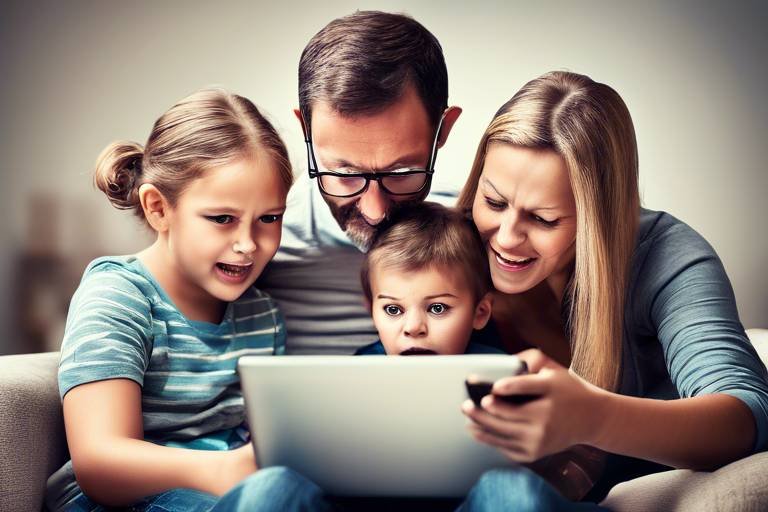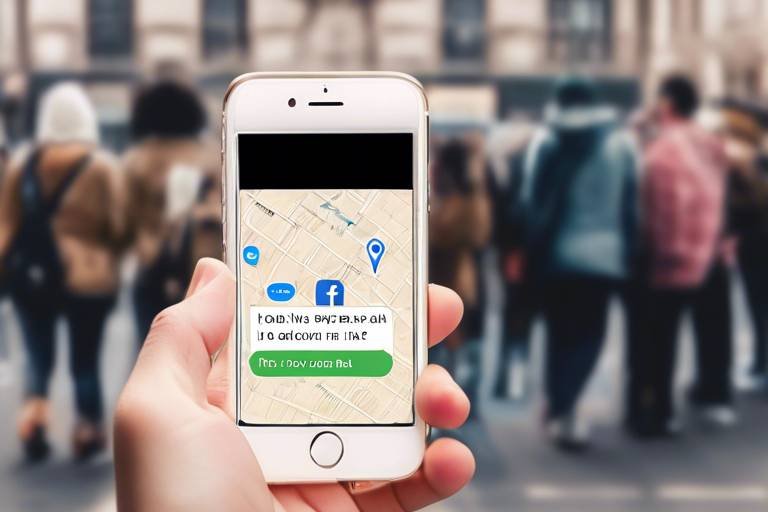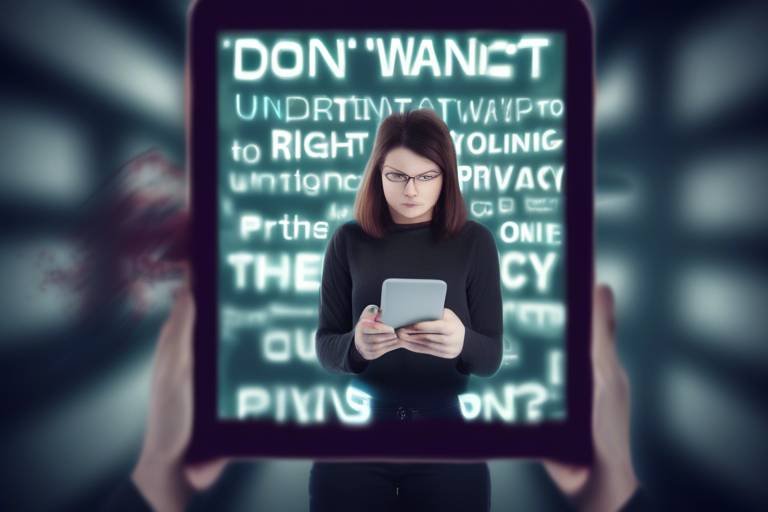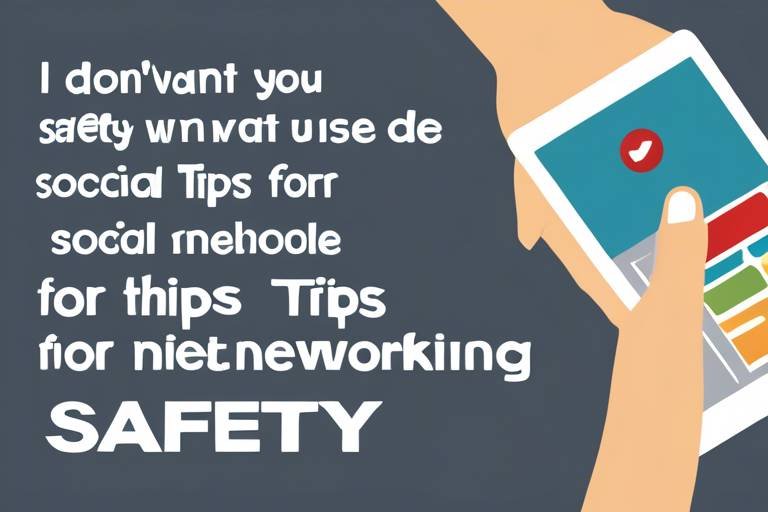Relationship Risks in the Digital Age
In today's world, where technology is woven into the fabric of our daily lives, the landscape of relationships has transformed dramatically. The digital age brings with it a myriad of relationship risks that can complicate even the strongest bonds. Think about it: how often do you check your phone during dinner? Or scroll through social media while spending time with your partner? These seemingly innocent habits can lead to misunderstandings, jealousy, and emotional distance. Understanding these risks is crucial for maintaining healthy connections in an era dominated by screens and instant communication.
Every day, millions of people connect through various digital platforms, yet this same technology can create barriers that hinder genuine emotional connections. From the allure of social media to the challenges posed by digital communication, it's essential to navigate these waters carefully. The question is, how do we protect our relationships in this fast-paced digital world? Let’s delve into the nuances of social media influence, the pitfalls of digital communication, and the privacy concerns that can undermine trust.
Social media platforms can significantly impact relationships by creating unrealistic expectations, fostering jealousy, and leading to misunderstandings. Have you ever found yourself comparing your relationship to the perfect couple you see on Instagram? It’s easy to fall into the trap of believing that everyone else has it figured out while you’re struggling. This constant comparison can breed discontent and resentment, making it vital to recognize the curated nature of online personas. Understanding these influences is crucial for maintaining healthy connections in the digital age.
Moreover, social media can foster feelings of jealousy. Seeing your partner comment on or like someone else's post can trigger insecurities, even if there’s no reason to doubt their loyalty. It’s important for couples to have open conversations about their social media interactions to mitigate these feelings. By setting clear boundaries and discussing what is acceptable online behavior, partners can maintain trust and emotional security.
While digital communication offers convenience, it can also lead to misinterpretations and emotional distance. Have you ever sent a text that was completely misunderstood? It happens more often than you might think. Text messages lack the nonverbal cues that are essential for conveying tone and intent. This can result in unnecessary conflicts and hurt feelings. Recognizing these pitfalls can help partners communicate more effectively and avoid misunderstandings.
Text messages are often stripped of emotion, which makes it easy for messages to be misinterpreted. For instance, a simple "K" can be taken as dismissive rather than neutral. Learning how to clarify intentions can prevent conflicts stemming from texting misunderstandings in relationships. A good practice is to follow up with a voice message or a quick call if a text conversation feels off.
Emojis can enhance communication by adding a layer of emotion, but they can also create confusion regarding tone. A smiley face can be perceived as sarcastic or genuine, depending on the context. Understanding how to use emojis appropriately can help convey emotions more clearly and reduce misinterpretations. It’s like adding seasoning to a dish; too much or too little can change the flavor entirely!
The timing of responses in digital communication can lead to anxiety and misunderstandings. If your partner takes hours to respond, it might trigger feelings of neglect. Discussing expectations around response times can foster better understanding between partners. Just as you would set rules for a game, having guidelines for communication can help keep the playing field level.
Online interactions with others can pose risks to relationships, including emotional affairs and distractions. The allure of chatting with someone new can sometimes overshadow the commitment to a partner. Recognizing the boundaries of online friendships is essential for maintaining trust and intimacy. It’s crucial to ask yourself: does this online interaction bring me closer to my partner or create distance?
Privacy issues in the digital realm can threaten relationship security. With so much personal information available online, it’s easy for misunderstandings to arise. Addressing privacy concerns openly can help partners establish trust and safeguard their emotional connections. For instance, discussing what information is shared on social media and how much access each partner has to the other's online accounts can prevent future conflicts.
Sharing passwords may seem like a sign of trust, but it can also lead to control issues and breaches of privacy. It’s essential to discuss boundaries around privacy for a healthy relationship. Trust is built on communication, not surveillance. Instead of sharing passwords, consider discussing what you both feel comfortable with regarding digital access.
Setting boundaries regarding social media interactions can help partners feel secure and respected. Clear communication about online behavior is vital for maintaining a trusting relationship. Discussing what is acceptable in terms of liking, commenting, or interacting with others online can help mitigate feelings of jealousy and insecurity.
- How can I improve communication with my partner in the digital age? Focus on being clear and concise in your messages, and consider using voice notes or video calls for important discussions.
- What are some signs of social media jealousy? If you find yourself feeling anxious when your partner interacts with others online, or if you frequently check their social media, it may be a sign of jealousy.
- How can I set healthy boundaries with my partner regarding online interactions? Have an open discussion about what is acceptable behavior online, and ensure both partners feel heard and respected.
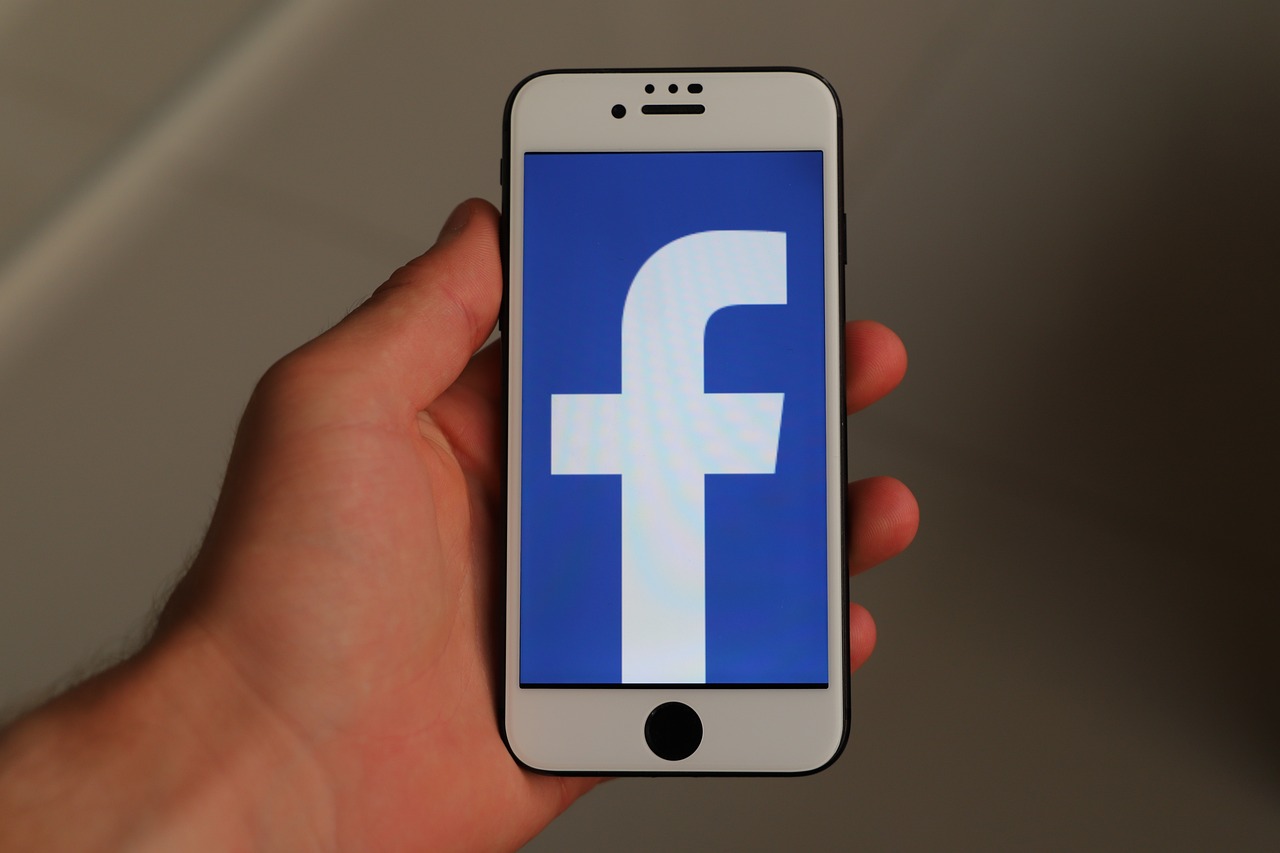
Social Media Influence
In today's hyper-connected world, social media has become a double-edged sword when it comes to relationships. On one hand, it allows us to stay in touch with loved ones, share experiences, and celebrate milestones. On the other hand, it can create unrealistic expectations and foster feelings of jealousy and insecurity. Think about it: scrolling through a feed filled with seemingly perfect couples can lead to comparisons that undermine our own relationships. It's as if we're constantly measuring our love against a yardstick of curated perfection, which can be detrimental.
Moreover, social media can lead to misunderstandings that might not have occurred in face-to-face interactions. For instance, a simple comment on a post can be taken out of context, sparking unnecessary arguments. It's crucial to recognize that what we see online is often a highlight reel, not the full story. To navigate these challenges, couples should engage in open discussions about their social media habits and how they affect their relationship. Here are some key points to consider:
- Setting Boundaries: Discuss what is acceptable to share online about your relationship.
- Communicating Feelings: If something bothers you about your partner's online behavior, address it calmly and openly.
- Understanding Triggers: Identify what types of posts or interactions might trigger feelings of jealousy or insecurity.
By addressing these issues head-on, couples can create a more supportive online environment that enhances their relationship rather than detracts from it. Remember, the goal is to use social media as a tool for connection, not a weapon for comparison.
In conclusion, understanding the impact of social media on relationships is vital in the digital age. Couples who actively engage in conversations about their online presence and its implications can foster a healthier connection. So, the next time you find yourself scrolling through your feed, take a moment to reflect: is this helping or hurting my relationship?
- How can social media impact my relationship? Social media can create unrealistic expectations, foster jealousy, and lead to misunderstandings, which can strain relationships.
- What should I do if I feel insecure about my partner's social media activity? Openly communicate your feelings with your partner and discuss boundaries regarding online interactions.
- Are there benefits to using social media in relationships? Yes, social media can help couples stay connected, share experiences, and celebrate milestones together.

Digital Communication Pitfalls
In today’s fast-paced world, digital communication has become the norm. While it offers unparalleled convenience, it also brings a host of potential pitfalls that can complicate relationships. Have you ever sent a message that was completely misunderstood? Or perhaps you found yourself in a heated debate over a simple text? These scenarios are more common than you might think. Understanding the nuances of digital communication is essential to avoid unnecessary conflicts and maintain healthy connections.
One of the biggest challenges is the absence of nonverbal cues in text messages. When we communicate face-to-face, our tone of voice, facial expressions, and body language convey a wealth of information. However, in the realm of texting, these cues are stripped away. This can lead to misinterpretations that escalate into larger issues. For instance, a simple "Okay" might be perceived as agreement or sarcasm, depending on the reader's mood or context. To mitigate this, partners can learn to clarify their intentions, perhaps by using follow-up questions or providing more context to their messages.
Texting is a double-edged sword. It allows for quick communication, but it can also lead to significant misunderstandings. Consider this: when you receive a text that seems curt or dismissive, how do you react? Often, the immediate response is to jump to conclusions, thinking your partner is upset or uninterested. This can create a cycle of anxiety and miscommunication. To break this cycle, it’s important to remember that not every message carries the same weight. Taking a moment to pause and consider the context can often diffuse tension before it escalates.
Emojis have revolutionized the way we express ourselves in text. They can add a splash of personality and emotion to otherwise flat messages. However, they can also lead to confusion regarding tone. For example, a winking face might be interpreted as playful banter or as flirtation, depending on the context of the conversation. Therefore, it’s crucial to use emojis judiciously. When in doubt, consider the nature of your relationship and the emotional state of the person on the receiving end. A well-placed emoji can enhance communication, but a poorly chosen one can lead to misunderstandings.
The timing of responses in digital communication can also add layers of complexity to relationships. Have you ever felt anxious waiting for a reply? In our hyper-connected world, we often expect immediate responses, which can lead to feelings of neglect if our partner doesn’t reply right away. Discussing expectations around response times can alleviate this anxiety. For example, if one partner is busy at work and can’t respond immediately, a simple message explaining the situation can go a long way in maintaining trust and understanding.
Online interactions with others can introduce risks to relationships, such as emotional affairs and distractions. It’s easy to get caught up in the digital world, losing sight of the emotional connection with your partner. Recognizing the boundaries of online friendships is essential. Just because you can chat with an old flame or someone new doesn’t mean you should. Maintaining trust and intimacy requires open communication about online interactions. Discussing what is acceptable and what crosses the line can help partners feel secure in their relationship.
In conclusion, while digital communication offers many advantages, it also presents unique challenges that can undermine relationships. By being aware of these pitfalls and actively working to address them, couples can foster healthier, more effective communication. Remember, it’s not just about what you say, but how you say it. So the next time you reach for your phone to text your partner, take a moment to consider the message you want to convey. It might just save you from an unnecessary argument!
- What are some common digital communication pitfalls? Misunderstandings, lack of nonverbal cues, and timing issues can all complicate digital communication.
- How can I avoid misunderstandings in texting? Clarify your intentions, provide context, and consider follow-up questions to ensure your message is understood.
- Are emojis helpful or harmful in communication? Emojis can enhance communication but should be used thoughtfully to avoid confusion regarding tone.
- What should I do if my partner takes too long to respond? Discuss expectations around response times to alleviate anxiety and maintain trust.
- How can online interactions affect my relationship? Online interactions can lead to emotional affairs and distractions, so it's important to set boundaries with your partner.

Texting Misunderstandings
This article explores the various risks that modern technology poses to relationships, including social media influences, digital communication pitfalls, and the impact of online interactions on emotional connections.
Social media platforms can significantly impact relationships by creating unrealistic expectations, fostering jealousy, and leading to misunderstandings. Understanding these influences is crucial for maintaining healthy connections in the digital age.
While digital communication offers convenience, it can also lead to misinterpretations and emotional distance. Recognizing these pitfalls can help partners communicate more effectively and avoid unnecessary conflicts.
Text messages are a staple of modern communication, but they can also be a breeding ground for misunderstandings. Unlike face-to-face conversations, texting lacks the vital nonverbal cues—like tone of voice and body language—that help convey meaning. This absence can create a perfect storm for confusion.
Imagine sending a simple message like, "I'm fine." Depending on the context and the relationship dynamics, this could be interpreted as genuine contentment or a veiled expression of frustration. It's crucial to recognize that the same words can carry different weights depending on the situation. Partners should strive to clarify their intentions, especially when discussing sensitive topics. Here are some strategies to consider:
- Ask for clarification: If a message feels off, don't hesitate to ask your partner what they meant. This can prevent a small misunderstanding from snowballing into a larger conflict.
- Use more words: Instead of sending short, ambiguous texts, try to be more descriptive. A little extra effort can go a long way in conveying your feelings.
- Follow up with a call: If a conversation gets heated over text, consider switching to a phone call. Hearing each other's voices can help clear the air.
By being proactive and mindful in your texting habits, you can significantly reduce the chances of misunderstandings that could potentially harm your relationship.
Emojis have become the modern-day hieroglyphics of communication, adding a dash of emotion to our texts. However, they can also create confusion regarding tone. A simple smiley face can be interpreted as friendly or sarcastic depending on the context. To enhance clarity, it's essential to use emojis thoughtfully. For instance:
- Use emojis to complement your text rather than replace it.
- Be mindful of the emoji's common interpretations; what seems cute to you might be perceived differently by your partner.
Understanding the nuances of emoji use can help convey emotions more clearly and reduce misinterpretations in your conversations.
The timing of your responses in digital communication can also lead to anxiety and misunderstandings. For example, if you take too long to reply, your partner might feel neglected or question your interest in the conversation. It's helpful to discuss expectations around response times, especially during busy periods. Here are a few tips:
- Set realistic expectations: If you know you'll be busy, let your partner know when they can expect a reply.
- Check-in regularly: A quick message to say, "Hey, I'm swamped but thinking of you!" can go a long way in reassuring your partner.
By discussing and understanding each other's communication styles, you can foster a better understanding that helps avoid unnecessary conflicts.
Online interactions with others can pose risks to relationships, including emotional affairs and distractions. Recognizing the boundaries of online friendships is essential for maintaining trust and intimacy.
Privacy issues in the digital realm can threaten relationship security. Addressing privacy concerns openly can help partners establish trust and safeguard their emotional connections.
Sharing passwords may seem like a sign of trust, but it can also lead to control issues and breaches of privacy. Discussing boundaries around privacy is essential for a healthy relationship.
Setting boundaries regarding social media interactions can help partners feel secure and respected. Clear communication about online behavior is vital for maintaining a trusting relationship.
Q: How can I improve communication with my partner in the digital age?
A: Focus on clarity, ask for clarification when needed, and consider switching to voice or video calls for sensitive topics.
Q: Are emojis helpful or harmful in texting?
A: Emojis can enhance communication but should be used thoughtfully to avoid misunderstandings.
Q: How do I set boundaries for online interactions?
A: Discuss openly with your partner what is acceptable in terms of online friendships and interactions to maintain trust.

Emojis and Tone
Emojis have become a universal language, bridging the gap between words and emotions in our digital conversations. They can add a splash of color and personality to our texts, transforming a simple message into something vibrant and expressive. However, it’s essential to recognize that while emojis can enhance communication, they can also lead to confusion regarding tone. For instance, a smiley face can convey friendliness, but without the right context, it might come off as sarcastic or insincere. This duality can create a minefield of misinterpretation in relationships.
Consider this: you receive a text from your partner that says, “I can’t believe you did that! 😒”. Depending on the context, this could either be a playful jab or a serious complaint. The emoji adds a layer of emotion, but without the accompanying tone of voice, the intent can easily be lost. This is where understanding the nuances of emoji use becomes vital.
To navigate the emotional landscape of emojis effectively, it’s helpful to establish a few ground rules with your partner. Here are some tips:
- Clarify Intent: Always be open about what you mean when using emojis. If you’re joking, make that clear.
- Ask for Clarification: If a message seems off, don’t hesitate to ask your partner what they meant. It’s better to clarify than to assume.
- Use Emojis Sparingly: While emojis can enhance a message, overusing them can dilute their impact. A well-placed emoji can say more than a string of them.
Furthermore, it’s crucial to consider the context in which you’re communicating. Emojis that might be acceptable in a lighthearted conversation may not be suitable in more serious discussions. For example, if you’re discussing a sensitive topic, a heart emoji might feel dismissive rather than supportive. Therefore, being mindful of the situation can help prevent emotional disconnects.
Ultimately, the key to using emojis effectively lies in communication. Just like in any relationship, understanding and clarity are paramount. By discussing how you both interpret emojis and setting guidelines for their use, you can foster a deeper connection and minimize misunderstandings. Remember, emojis are just tools; it’s how you use them that truly counts!
- Can emojis replace words in communication? While emojis can enhance messages, they shouldn’t completely replace words, especially for important topics.
- How can I avoid misunderstandings with emojis? Clarify your intentions when using emojis and encourage your partner to do the same.
- Are there any emojis that are universally understood? Some emojis, like the heart or smiley face, tend to have widely accepted meanings, but context is always key.

Timing and Response
In today's fast-paced digital world, the timing of our responses can make or break a conversation. Have you ever sent a text and felt a wave of anxiety wash over you while waiting for a reply? This phenomenon is all too common in relationships, where the immediacy of digital communication can create unrealistic expectations. When partners don't respond right away, it can lead to feelings of insecurity and doubt. It's crucial to understand that not everyone is glued to their phone 24/7, and a delayed response doesn't necessarily indicate disinterest or neglect.
To navigate this tricky terrain, open communication about response times is essential. Discussing your expectations can help alleviate misunderstandings. For instance, if one partner prefers quick replies while the other is more laid-back, this disparity can lead to unnecessary friction. Setting a mutual understanding can prevent the dreaded "ghosting" feeling that often accompanies delayed messages. Partners should consider the following:
- Establish response time norms: Agree on what a reasonable response time is for both parties.
- Communicate availability: If you're busy and can't reply immediately, a quick message to acknowledge receipt can go a long way.
- Be patient and understanding: Life happens, and sometimes we just can't respond right away. A little grace can strengthen your connection.
The emotional weight of waiting for a response can be likened to waiting for a roller coaster to drop; the anticipation can be thrilling but also nerve-wracking. Just as you wouldn't want to be stuck in line forever, waiting for a response shouldn't feel like an eternity. By establishing clear expectations and being mindful of each other's communication styles, couples can navigate the complexities of digital interactions with ease.
Moreover, the context of the conversation plays a significant role in how timing is perceived. For example, a lighthearted chat about weekend plans may not carry the same weight as a serious discussion about relationship issues. Recognizing the context can help partners gauge the urgency of their responses. In essence, it's about finding a balance that works for both individuals, ensuring that the digital communication enhances rather than hinders the emotional connection.
In conclusion, while the digital age offers incredible tools for staying connected, it also presents unique challenges. By prioritizing open dialogue about timing and response expectations, couples can foster a deeper understanding and stronger bond. Remember, it's not just about the speed of your replies; it's about the quality of your communication that truly matters.
Q1: How can I address my partner's delayed responses without sounding accusatory?
A1: Approach the topic gently by expressing your feelings rather than pointing fingers. Use "I" statements, such as "I feel anxious when I don't hear back from you," to foster understanding.
Q2: What if my partner and I have different communication styles?
A2: It’s essential to have an open discussion about each other's styles. Find a compromise that respects both preferences, ensuring both partners feel valued.
Q3: How can I manage my anxiety while waiting for a response?
A3: Distract yourself with activities you enjoy, or remind yourself that everyone has their own pace. Practicing mindfulness can also help reduce anxiety.

Online Interactions
In this digital age, where our lives are intertwined with technology, can be both a blessing and a curse for relationships. Think about it: we can connect with anyone, anywhere, at any time. But this constant connectivity also opens the door to emotional affairs, distractions, and misunderstandings that can jeopardize the trust between partners. It's like having a double-edged sword; on one side, you have the ability to maintain relationships, and on the other, the potential to create rifts.
One of the most significant risks associated with online interactions is the possibility of developing emotional attachments outside of your primary relationship. This can happen subtly; a few innocent chats with an old friend can evolve into something more profound. When you share your thoughts, feelings, and experiences with someone else, it can create an emotional bond that might threaten your existing relationship. It’s crucial to recognize the signs of this emotional drift and address them before they escalate.
Moreover, the distractions of online life can pull attention away from your partner. When scrolling through social media feeds, it's easy to lose track of time and neglect the person sitting right next to you. Have you ever found yourself more engaged with your phone than with your partner during dinner? This kind of behavior can lead to feelings of neglect and resentment. Setting aside specific times for undistracted interaction can help bridge this gap and strengthen your connection.
To maintain a healthy relationship in the face of online interactions, it’s essential to establish boundaries. Here are a few guidelines to consider:
- Define acceptable online behavior: Discuss what types of interactions with others are comfortable for both partners.
- Limit time spent on devices: Create tech-free zones or times to ensure quality time together.
- Be transparent: Share your online interactions with each other to build trust and understanding.
By recognizing the potential risks and setting clear boundaries, couples can navigate the complexities of online interactions more effectively. It’s about finding a balance that allows for personal connections while nurturing the primary relationship. Remember, communication is key. If something feels off, don't hesitate to discuss it openly with your partner.
Q1: How can I tell if my partner is developing an emotional attachment online?
A1: Look for signs such as increased secrecy around phone use, a change in emotional availability, or a noticeable lack of interest in your relationship. Open communication is vital; discuss your feelings and concerns with your partner.
Q2: What are some effective ways to set boundaries regarding online interactions?
A2: Start by having an honest conversation about what makes both partners comfortable. Establish guidelines for social media use, texting, and online friendships, and agree on tech-free times to foster intimacy.
Q3: Can online interactions ever be beneficial for relationships?
A3: Absolutely! Online interactions can help couples stay connected, especially if they are in long-distance relationships. Sharing experiences, thoughts, and even funny memes can enhance emotional bonds, as long as both partners are on the same page regarding boundaries.
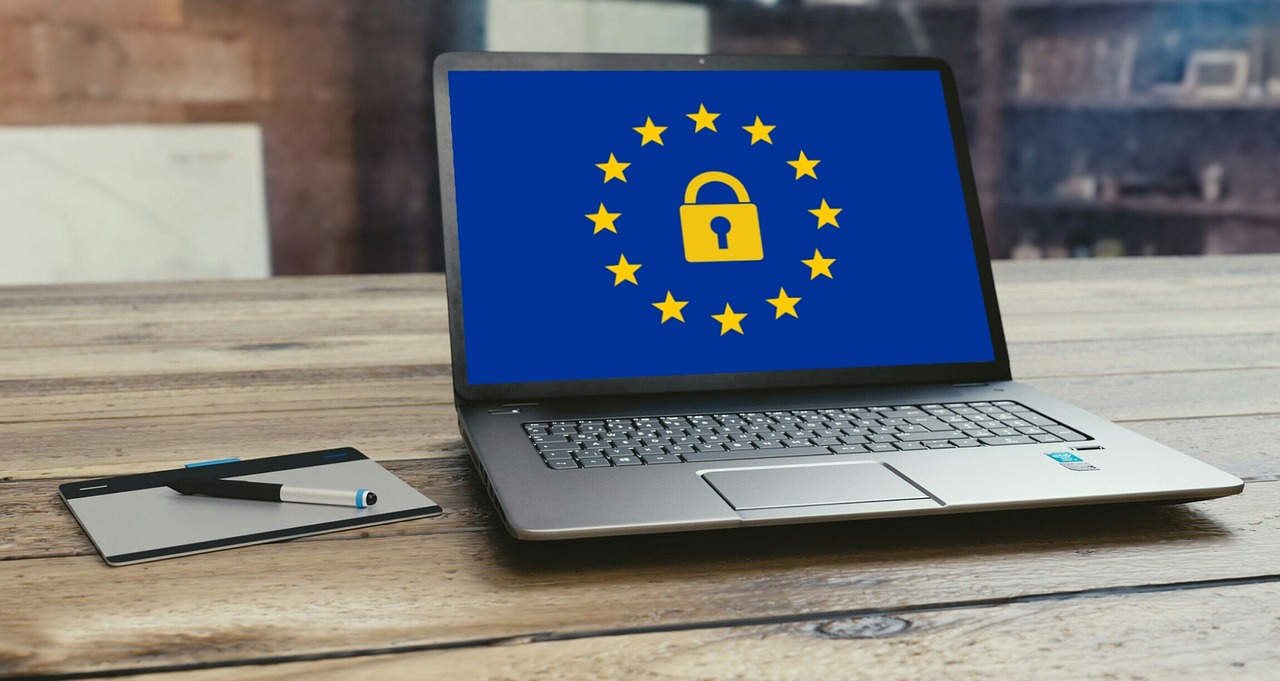
Privacy Concerns
In today's digital landscape, privacy concerns have emerged as a significant threat to relationship security. With the rise of social media and online interactions, safeguarding personal information has never been more crucial. Think about it: every time you share a moment online, you’re not just sharing a picture; you’re potentially opening the door to scrutiny and judgment. This can lead to feelings of vulnerability and anxiety, especially if partners are unsure about how much of their lives should be shared with the world.
One of the most pressing issues surrounding privacy in relationships is the sharing of passwords. While it may seem like a gesture of trust, sharing passwords can quickly spiral into control issues. Imagine giving your partner access to your social media accounts, only to find out they’re checking your messages or monitoring your interactions. This can create a toxic environment where one partner feels suffocated by the other’s need for transparency. It’s essential to discuss boundaries around privacy openly. Establishing what is acceptable and what isn't can significantly enhance trust and security in a relationship.
Moreover, the digital age has blurred the lines of personal space. Consider the following aspects of privacy that couples should navigate carefully:
- Social Media Boundaries: Setting clear boundaries regarding what is shared online can help maintain a sense of security. Discussing what feels comfortable for both partners can prevent misunderstandings and feelings of betrayal.
- Online Friendships: While having friends online is a norm, it’s crucial to recognize the emotional investment that can develop in these virtual relationships. Being aware of how these interactions might affect your primary relationship can help in maintaining trust.
- Digital Footprint: Every click, share, and post contributes to your digital footprint. Being mindful of what you share can protect not only your privacy but also that of your partner.
In conclusion, addressing privacy concerns openly and honestly is vital for fostering trust and intimacy in any relationship. By discussing boundaries and expectations, partners can navigate the complexities of the digital world together, ensuring that their emotional connections remain strong and secure.
- What are some common privacy concerns in relationships?
Common concerns include the sharing of passwords, social media interactions, and the potential for emotional affairs through online connections. - How can couples establish healthy boundaries regarding privacy?
Open communication is key. Discuss what feels comfortable for both partners and set clear expectations around sharing personal information. - Why is it important to address privacy issues in a relationship?
Addressing privacy concerns helps build trust, prevents misunderstandings, and fosters a sense of security within the relationship.

Sharing Passwords
In today's digital landscape, sharing passwords may seem like a trust-building gesture between partners. However, it can also open the door to a myriad of control issues and potential breaches of privacy. Imagine giving someone the key to your house; while it could signify a deep level of trust, it also means they have access to everything within. The same principle applies to sharing passwords.
When partners share passwords, they often do so with the best intentions, believing it will enhance their connection. But what happens when one partner feels the need to check the other's messages or social media accounts? This can lead to feelings of insecurity and jealousy, creating a rift rather than fostering intimacy. It's essential to recognize that trust is built on open communication and respect for each other's privacy.
To navigate this sensitive issue, couples should consider establishing clear boundaries around password sharing. A good starting point is to discuss the reasons behind wanting to share passwords. Is it for convenience, or is it rooted in a need for control? Understanding each other's motivations can help partners find common ground. Here are some important points to consider:
- Trust vs. Control: Ensure that sharing passwords does not stem from a need to control or monitor each other.
- Privacy Matters: Respecting each other's privacy is crucial for emotional security.
- Transparency: If you feel the need to share passwords, discuss it openly rather than assuming it's a given.
Moreover, it's essential to have conversations about what sharing passwords means for both partners. Are there specific accounts that are off-limits? Establishing these boundaries can help prevent misunderstandings and maintain a healthy balance in the relationship. After all, a relationship should be a partnership based on mutual respect, not a surveillance operation.
In conclusion, while sharing passwords might seem like a harmless act, it's crucial to weigh the potential risks against the benefits. By prioritizing communication and respecting privacy, couples can navigate this digital dilemma without compromising their emotional connection.
- Is it okay to share passwords with my partner? - While it can be a sign of trust, it's important to discuss the implications and boundaries surrounding password sharing.
- What if my partner wants to check my messages? - Openly communicate your feelings and establish boundaries to maintain trust and privacy.
- How can we build trust without sharing passwords? - Focus on open communication, transparency, and respect for each other's privacy as foundational elements of trust.

Social Media Boundaries
In the fast-paced world of social media, establishing boundaries is crucial for maintaining a healthy relationship. Think of social media as a double-edged sword; while it can enhance communication and connection, it can also introduce a host of complications if not navigated carefully. Couples often find themselves in a tangled web of likes, comments, and messages that can lead to misunderstandings and even jealousy. So, how do we draw the line in the sand?
First, it's essential to have an open conversation about what each partner is comfortable with regarding social media interactions. This discussion should cover various aspects, including:
- What types of posts are acceptable?
- How do we handle interactions with ex-partners?
- Are private messages okay with friends of the opposite sex?
By setting clear expectations, couples can avoid potential pitfalls that might arise from miscommunication or assumptions. For instance, if one partner frequently engages with an ex on social media, the other might feel insecure or threatened. Addressing these feelings head-on can prevent resentment from brewing beneath the surface.
Moreover, it's vital to recognize the difference between public and private interactions. Public displays of affection on social media can be sweet, but they can also invite unwanted attention or judgment from others. Couples should discuss how much of their relationship they want to share online versus keeping certain moments private. This understanding helps build trust and respect, ensuring that both partners feel valued and secure.
Another important aspect is the management of friend lists. Who do you add as friends? Are there certain people that should be off-limits? Discussing these topics can help set boundaries that protect the relationship. It’s not about controlling each other but rather about fostering a sense of safety and comfort. For example, if one partner feels uneasy about the other being friends with a coworker of the opposite sex, it’s essential to talk it out and find a middle ground.
Lastly, consider implementing a "social media detox" day or week where both partners agree to unplug from their devices. This break allows couples to reconnect without the distractions of notifications and online interactions. It’s a chance to focus on each other, fostering intimacy and understanding away from the screens.
In conclusion, navigating social media in a relationship requires communication, trust, and a willingness to set boundaries. By discussing expectations and being mindful of each other's feelings, couples can create a healthy balance that enhances their connection rather than detracting from it.
- What are social media boundaries? Social media boundaries refer to the guidelines and expectations that partners set regarding their online interactions to ensure mutual respect and trust.
- How can we establish social media boundaries? Open communication is key. Discuss what you’re comfortable with regarding posts, interactions with others, and privacy.
- Why are social media boundaries important? They help prevent misunderstandings, jealousy, and conflicts, fostering a healthier relationship.
- Should we share passwords with each other? While sharing passwords can signify trust, it’s important to discuss boundaries to avoid control issues and maintain privacy.
Frequently Asked Questions
- How can social media affect my relationship?
Social media can create unrealistic expectations and foster jealousy, leading to misunderstandings. It's essential to communicate openly about how you both use social media to maintain a healthy relationship.
- What are some common digital communication pitfalls?
Digital communication can lead to misinterpretations due to the lack of nonverbal cues. Texting misunderstandings are common, and partners should clarify intentions to avoid unnecessary conflicts.
- How can I avoid misunderstandings when texting?
To avoid misunderstandings, be clear and concise in your messages. If you're unsure how your message may be received, consider adding a clarifying statement or an emoji to convey your tone.
- Are emojis helpful or confusing in communication?
Emojis can enhance communication by adding emotional context, but they can also create confusion regarding tone. Use them thoughtfully and ensure both you and your partner understand their meanings.
- What should we discuss about response times in digital communication?
Discussing expectations around response times can help reduce anxiety. Agree on what’s reasonable for both of you, so you can feel secure without assuming the worst when replies take longer than expected.
- How can online interactions pose risks to my relationship?
Online interactions can lead to emotional affairs or distractions that may undermine trust. It's important to recognize boundaries and maintain transparency about your online friendships.
- What privacy concerns should I be aware of in a relationship?
Privacy issues, such as sharing passwords or social media boundaries, can threaten relationship security. Open discussions about privacy can help establish trust and protect emotional connections.
- Is sharing passwords a good idea in a relationship?
While sharing passwords may seem like a sign of trust, it can lead to control issues. It's crucial to discuss boundaries around privacy to ensure both partners feel secure.
- How can we set social media boundaries in our relationship?
Setting social media boundaries involves clear communication about what is acceptable behavior online. Discuss your comfort levels regarding interactions with others to maintain a trusting relationship.





